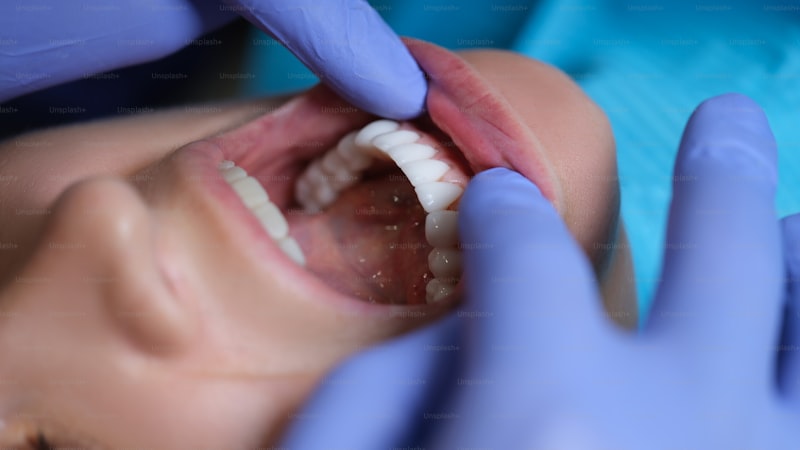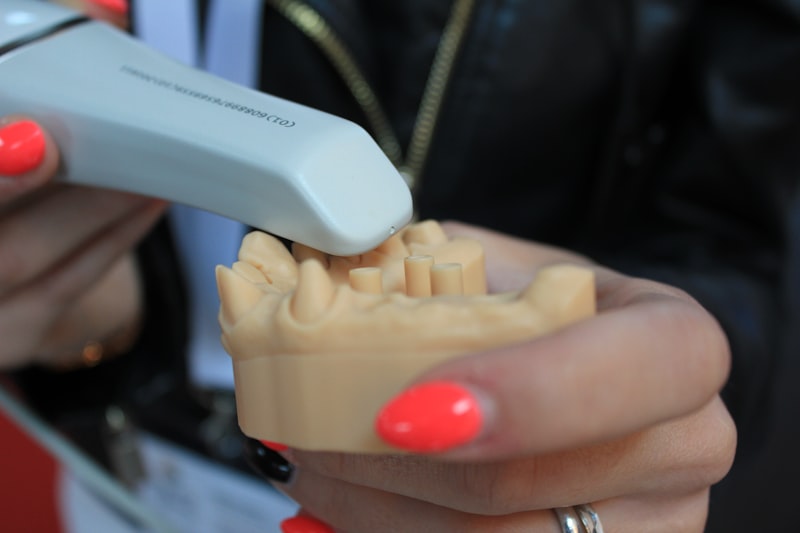Thinking about getting an oral piercing? It might seem like a cool way to express yourself, but there are some serious risks you should consider before taking the plunge. Oral piercings, whether on the tongue, lips, or cheeks, can pose significant health hazards that go beyond just the initial pain.
One of the most common issues with oral piercings is infection. The mouth is full of bacteria, and introducing a foreign object can easily lead to infection if not properly cared for. Swelling, pain, and even difficulty in speaking or swallowing can result from an infected piercing, turning what was supposed to be a fashion statement into a painful ordeal.
But infection isn’t the only risk. Oral piercings can also cause damage to teeth and gums. Constant contact between the piercing and teeth can lead to chipped or cracked teeth over time. The gums can also suffer, with piercings rubbing against them and causing recession or even gum disease in severe cases.
Another concern is the risk of nerve damage. Oral piercings are often placed in sensitive areas of the mouth, and if not placed correctly, they can damage nerves, leading to temporary or even permanent numbness or loss of sensation in the tongue, lips, or cheeks.

Beyond the physical risks, oral piercings can also interfere with everyday activities like eating and speaking. Tongue piercings, for example, can affect speech clarity and cause problems with chewing and swallowing food.
Before deciding on an oral piercing, it’s crucial to weigh these risks carefully. Proper hygiene and regular check-ups with a dentist or piercer can help minimize some of these dangers, but ultimately, understanding the potential risks is essential to making an informed decision.
Beneath the Bling: Unveiling the Hidden Dangers of Oral Piercings
Oral piercings, often seen as trendy fashion statements, can harbor hidden risks that go beyond style. While they may seem harmless, these adornments come with potential health hazards that deserve careful consideration.
Imagine your tongue as a canvas for self-expression, adorned with a small stud or hoop. It’s a bold statement, but beneath the sparkle lies a host of risks. Oral piercings, whether on the tongue, lips, or cheeks, can lead to complications ranging from infections to more serious health issues.
One of the primary concerns is infection. The mouth hosts a multitude of bacteria, making it a breeding ground for potential harm. Piercings disrupt the natural barrier of the skin, providing a direct entry point for bacteria and viruses. This increases the risk of infections like cellulitis or even life-threatening conditions such as endocarditis, an infection of the heart valves.
Beyond infections, oral piercings can also cause damage to teeth and gums. Constant contact between metal jewelry and teeth can lead to chipped or cracked enamel. In some cases, the pressure of jewelry against gums may cause recession, exposing roots and increasing sensitivity.
Moreover, there’s a risk of swelling and inflammation. The tongue, in particular, is susceptible to swelling after piercing, which can interfere with normal breathing and swallowing. In rare cases, severe swelling may even block the airway, posing an immediate emergency.
Consider the long-term implications as well. Oral piercings may contribute to excessive drooling or altered speech patterns. Furthermore, constant movement of jewelry against oral tissues can delay healing and prolong discomfort.
While oral piercings offer a way to showcase individuality, it’s crucial to weigh the risks against the aesthetic appeal. Before opting for a tongue, lip, or cheek piercing, consult with a qualified healthcare professional to understand the potential risks and necessary precautions. Your oral health and overall well-being deserve careful consideration in the pursuit of self-expression.
This article highlights the risks associated with oral piercings in a conversational tone, emphasizing both the allure and the potential dangers, aiming to captivate the reader’s interest while providing valuable information.
Oral Piercings: Fashion Statement or Dental Disaster?
Are oral piercings worth the style statement they make, or do they pose a hidden risk to your dental health? This debate revolves around the dual nature of oral piercings, where fashion meets potential dental disaster.
Imagine sporting a tongue stud or lip ring, instantly adding an edgy flair to your appearance. It’s trendy, bold, and speaks volumes about personal style. However, beneath the surface lies a dental landscape that may not be as thrilled about the new addition. Oral piercings, while visually striking, can lead to a host of dental complications.
One of the primary concerns is oral hygiene. Piercings create new nooks and crannies where bacteria can thrive, increasing the risk of infections and gum disease. Maintaining oral hygiene becomes more challenging as plaque builds up around the piercing site, potentially causing tooth decay and bad breath.
Beyond hygiene, there are practical risks during the piercing process itself. Improperly sterilized equipment or unskilled piercers can lead to infections or nerve damage. Even after healing, the metal jewelry can chip or crack teeth during daily activities like eating or speaking.
Health professionals often caution against oral piercings due to these risks. Yet, for many, the allure of self-expression through body art outweighs the potential consequences. It’s a balancing act between personal style and dental health—a decision each individual must weigh carefully.
Oral piercings offer a bold fashion statement but come with inherent risks to dental health. Choosing to get an oral piercing should involve thorough research, finding a reputable piercer, and committing to diligent oral care routines. Ultimately, whether it’s a fashion statement or a dental disaster depends on how well it’s managed and cared for.
The Perils Lurking Behind Oral Piercings: What You Need to Know
Thinking of getting an oral piercing? Before you take the plunge into this trendy accessory, it’s crucial to understand the potential risks lurking beneath the surface. While tongue, lip, and cheek piercings can be a bold statement, they come with their own set of perils that every potential wearer should be aware of.
One of the primary concerns with oral piercings is the risk of infection. The mouth hosts a vast array of bacteria, and introducing a foreign object through a piercing creates an open door for these bacteria to enter the bloodstream. This can lead to infections not just in the mouth but also potentially affecting other parts of the body.
Beyond infections, oral piercings can cause damage to the teeth and gums. Constant contact between the metal jewelry and the teeth can result in chipped or cracked teeth over time. Moreover, the repetitive motion of playing with the piercing can irritate the gums and cause recession, which may eventually lead to more serious dental issues.
Another lesser-known risk is nerve damage. The tongue, especially, contains numerous sensitive nerves. Improper piercing techniques or accidental piercing of a nerve can lead to permanent numbness or altered sensation in the tongue, affecting speech and taste.
In addition to physical risks, oral piercings can also interfere with everyday activities such as eating and speaking. Swelling and pain after getting a piercing are common, making it difficult to eat certain foods or speak clearly until the area heals.
Before deciding on an oral piercing, weigh the risks carefully and consult with a reputable piercer and a dentist. Proper aftercare and hygiene are crucial to minimize complications and ensure a safe piercing experience. Stay informed and make a decision that prioritizes both style and health.
From Trendy to Troublesome: Exploring the Health Risks of Oral Piercings
Are you thinking about getting your tongue pierced or maybe a trendy lip stud? Before you take the plunge into the world of oral piercings, it’s essential to understand the potential health risks associated with them. While these piercings might look cool and express your style, they come with a host of considerations that could impact your oral and overall health.
One of the primary concerns with oral piercings is the risk of infection. Your mouth hosts a bustling community of bacteria, and introducing a foreign object like a piercing can create an entry point for these bacteria. Poor piercing hygiene or touching the piercing with unwashed hands can lead to infections ranging from mild to severe, including gum disease and even infections that spread beyond the mouth.
But infections aren’t the only risk. Oral piercings can also cause damage to your teeth and gums. Constantly playing with or biting on a piercing can wear down enamel, leading to tooth sensitivity, cracks, or even fractures. The metal jewelry itself can also cause gum recession, where the gums pull away from the teeth, exposing roots and making them more susceptible to decay.
Beyond dental issues, there’s a risk of choking or swallowing the jewelry itself, especially with tongue piercings. Accidentally biting down on a piercing can lead to serious mouth injuries, including chipped or cracked teeth, which may require dental procedures to repair.
Another often overlooked risk is the potential for nerve damage. Piercings done improperly or placed incorrectly can damage nerves in the tongue or lips, leading to numbness, loss of sensation, or even difficulty with normal mouth function like speaking or swallowing.
Before deciding on an oral piercing, it’s crucial to weigh these risks carefully. Consult with a reputable piercer who uses sterile equipment and practices good hygiene. Be diligent about cleaning the piercing site as directed and pay attention to any signs of infection or complications. Your oral health is worth protecting, so make an informed decision that considers both style and safety.
Dental Dangers: How Oral Piercings Can Impact Your Oral Health
Have you ever considered getting an oral piercing? While they may seem like a trendy way to express individuality, oral piercings can pose significant risks to your dental health. These accessories, whether they’re on your tongue, lips, or cheeks, can lead to a range of complications that affect your oral well-being.

One of the primary concerns with oral piercings is their potential to damage teeth and gums. The metal jewelry can come into contact with teeth, causing chips, cracks, or even fractures. This physical trauma isn’t just cosmetic; it can weaken teeth and necessitate costly dental repairs. Moreover, piercings in the tongue or lips can irritate the gums, leading to gum recession and increased sensitivity.
Beyond the direct damage to teeth and gums, oral piercings can also contribute to oral infections. The mouth is a breeding ground for bacteria, and any break in the skin barrier (like that caused by piercing) can invite harmful bacteria into the bloodstream. This can result in infections not only in the mouth but also potentially affecting other parts of the body.
Furthermore, oral piercings may interfere with everyday functions like chewing, swallowing, and speaking. Tongue piercings, for example, can hinder proper tongue movement and pronunciation. This interference can lead to discomfort and difficulty performing basic oral functions.
While the allure of oral piercings may be strong, it’s crucial to weigh the potential risks they pose to your dental health. Before getting an oral piercing, consult with a dentist to understand the implications and ensure you’re making an informed decision. Your smile and oral health are worth protecting from unnecessary risks.
Frequently Asked Questions
What should I do if I experience swelling or pain after getting an oral piercing?
If you experience swelling or pain after getting an oral piercing, it’s important to take immediate steps to care for it. Rinse your mouth with a saline solution several times a day to reduce bacteria and promote healing. Use over-the-counter pain relievers and avoid spicy or acidic foods that can irritate the piercing. If the swelling persists or you notice signs of infection such as pus, fever, or increasing pain, contact your piercer or a healthcare professional for further guidance.
What are the signs of infection after getting an oral piercing?
Learn about the signs of infection following an oral piercing, including redness, swelling, pain, warmth around the piercing site, discharge of pus, and fever. Promptly seek medical advice if any of these symptoms appear.
How can oral piercings affect dental health?
Learn how oral piercings can impact dental health, including risks such as tooth chipping, gum damage, and increased bacterial infection. Discover ways to minimize these risks and maintain oral hygiene.
How can I minimize the risks of complications from an oral piercing?
Learn how to minimize the risks of complications from an oral piercing with these essential tips and practices. Discover preventive measures to maintain oral hygiene, reduce swelling and infection risks, and ensure proper aftercare for a safe healing process.
What are the potential health risks associated with oral piercings?
Learn about the potential health risks of oral piercings, including infections, gum damage, tooth fractures, and increased saliva production. Understand how proper care and hygiene can mitigate these risks.


